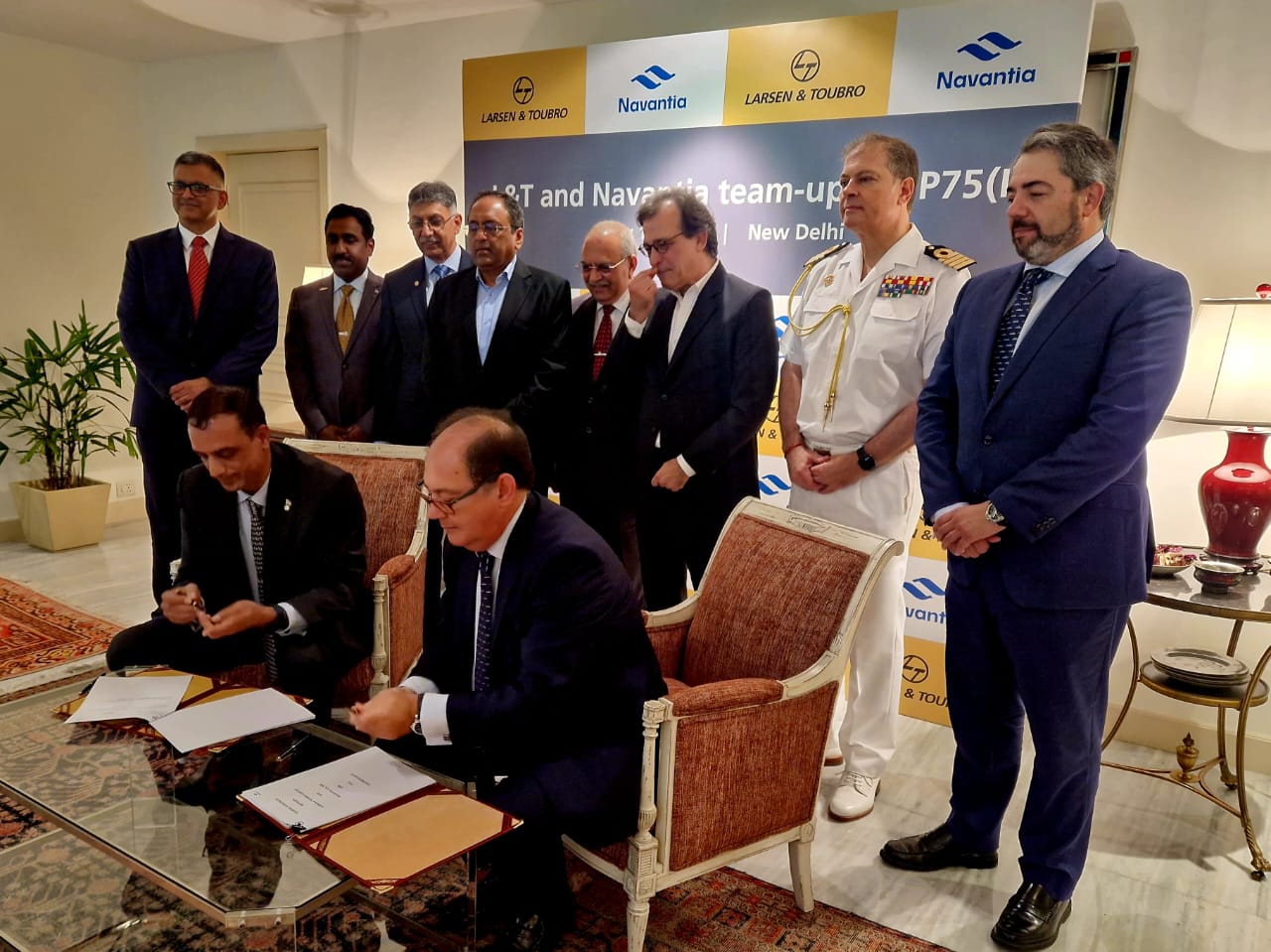The Diplomat
Navantia signed a teaming agreement yesterday with the Indian company Larsen & Toubro to jointly submit a technical-commercial offer for the Indian Navy’s P75 (India) submarine programme.
The signing ceremony, which was held at the Spanish Embassy in New Delhi, was attended by S. N. Subrahmanyan, CEO and Managing Director of L&T, and Agustín Álvarez Blanco, Navantia’s Director of Shipbuilding. Also present were José María Ridao Domínguez, Spanish Ambassador to India and Captain Fernando Álvarez, Spanish Defence Attaché, along with senior officials from L&T Defence and Navantia.
This programme requires each Indian bidder to partner with a foreign collaborator to execute the programme to build six conventional submarines equipped with air independent propulsion (AIP), along with spares, simulators, shore support, training and technology transfer (ToT) elements.
Valued at over €4.8 billion, this is India’s largest defence procurement project. It will be followed by a 30-year life-cycle sustainment contract for a similar value. P75(I) would be the first programme to be processed under the MoD’s ambitious strategic partnership (SP) procurement model. L&T and Navantia signed a memorandum of understanding (MoU) for the programme on 11 April 2023 in Madrid, which has now culminated in this agreement.
Under the agreement, Navantia would carry out the design of the P75(I) submarines, based on its S80-class submarines, the first of which was floated in 2021 and is undergoing sea trials before delivery to the Spanish Navy in late 2023.
In addition to the S80 class, Navantia participated in the design and construction of the Scorpene class submarines together with DCNS (now Naval Group) of France, which have been exported to Chile and Malaysia. Navantia has also participated in the Scorpene submarines (Kalvari class) built in India.
The P75(I) programme requires the integration of an AIP system. Navantia’s 3rd generation AIP solution is the most advanced, efficient and environmentally friendly AIP system. It is the most compact, easy to operate and maintain. It uses bioethanol as a source of hydrogen, which is cost-effective, easy to obtain and does not require any special infrastructure. The high density of hydrogen in ethanol improves the efficiency of the system. Ethanol, being in liquid form, eliminates the risks associated with hydrogen storage. In addition, the wide availability of ethanol allows the system to be refuelled anywhere in the world.
L&T and Navantia are also exploring potential avenues for cooperation on other military programmes, as well as green energy opportunities, including offshore wind through the Navantia Seanergies division.
Following the signing of the agreement, S. N. Subrahmanyan said: “L&T is proud to collaborate with Navantia on this prestigious programme of strategic importance to the nation’s security. Navantia’s 300-year long history of shipbuilding and technical expertise gives us a competitive advantage in this programme and offers an environmentally friendly solution. We are committed to providing the best possible solution for the Indian Navy’s requirements at a competitive price”.
Agustin Alvarez Blanco commented: “We are proud to be the technology and design partner for the P75(I). We are also collaborating with L&T for the LPD programme, for which we are awaiting a tender. With these two prestigious programmes for the Indian Navy, Navantia is making a key contribution to meeting the defence needs of India, a nation with which Spain shares an excellent relationship.







